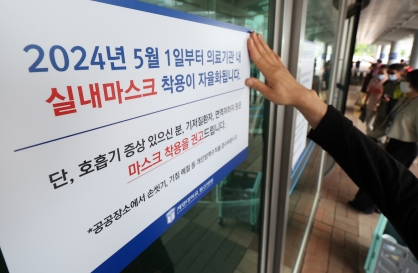
RICHMOND, Virginia (AP) ― Using modern technology, a Virginia museum is working to unwrap the story behind one of the earliest surviving Egyptian mummies.
The Virginia Museum of Fine Arts in Richmond partnered week with a medical imaging center to complete a CT scan on Tjeby, its 4,000-year-old mummy, in hopes of piecing together more information about the mummy itself and better understanding the early history of the mummification process.
While it isn’t the first time a mummy has gone under the digital knife, only a handful from the time period have been examined in this fashion. The information gathered will help provide greater detail of the body, create a 3-D digital model and even reconstruct the face of the mummy that has been on display off and on since being acquired by the museum in 1953.
Little is known about Tjeby, who was buried in a rock-cut tomb at a site known as Sheikh Farag in upper Egypt and excavated in 1923.
What museum officials do know is that he dates to between 2150 and 2030 BCE, a time of instability in Egypt, with the breakdown of central authority and economic decline. Previous research suggests Tjeby was 25 to 40 years old when he died.
Experts hope a closer look at data will help piece together more biographical information, such as Tjeby’s specific age, diet and cause of death. They also will look at the materials used to mummify the body and the amount of soft tissue that has survived, and will determine whether organs have been removed, as they were in mummies from later periods.
Researchers say the technology allows them to learn about the mummy in remarkable detail without invasive or damaging procedures.
“It’s easier to unlock that door of mystery to discover the secrets of the past,’’ said Alex Nyerges, the museum’s director. He anticipates incorporating information gleaned from the scan into the display of the mummy, which also includes its coffin and other artifacts from inside, such as a model of a boat and a granite statue.
The Virginia Museum of Fine Arts in Richmond partnered week with a medical imaging center to complete a CT scan on Tjeby, its 4,000-year-old mummy, in hopes of piecing together more information about the mummy itself and better understanding the early history of the mummification process.
While it isn’t the first time a mummy has gone under the digital knife, only a handful from the time period have been examined in this fashion. The information gathered will help provide greater detail of the body, create a 3-D digital model and even reconstruct the face of the mummy that has been on display off and on since being acquired by the museum in 1953.
Little is known about Tjeby, who was buried in a rock-cut tomb at a site known as Sheikh Farag in upper Egypt and excavated in 1923.
What museum officials do know is that he dates to between 2150 and 2030 BCE, a time of instability in Egypt, with the breakdown of central authority and economic decline. Previous research suggests Tjeby was 25 to 40 years old when he died.
Experts hope a closer look at data will help piece together more biographical information, such as Tjeby’s specific age, diet and cause of death. They also will look at the materials used to mummify the body and the amount of soft tissue that has survived, and will determine whether organs have been removed, as they were in mummies from later periods.
Researchers say the technology allows them to learn about the mummy in remarkable detail without invasive or damaging procedures.
“It’s easier to unlock that door of mystery to discover the secrets of the past,’’ said Alex Nyerges, the museum’s director. He anticipates incorporating information gleaned from the scan into the display of the mummy, which also includes its coffin and other artifacts from inside, such as a model of a boat and a granite statue.
-
Articles by Korea Herald




![[Music in drama] Rekindle a love that slipped through your fingers](http://res.heraldm.com/phpwas/restmb_idxmake.php?idx=644&simg=/content/image/2024/05/01/20240501050484_0.jpg&u=20240501151646)

![[New faces of Assembly] Architect behind ‘audacious initiative’ believes in denuclearized North Korea](http://res.heraldm.com/phpwas/restmb_idxmake.php?idx=644&simg=/content/image/2024/05/01/20240501050627_0.jpg&u=20240502093000)


![[KH Explains] Will alternative trading platform shake up Korean stock market?](http://res.heraldm.com/phpwas/restmb_idxmake.php?idx=644&simg=/content/image/2024/05/01/20240501050557_0.jpg&u=20240501161906)









